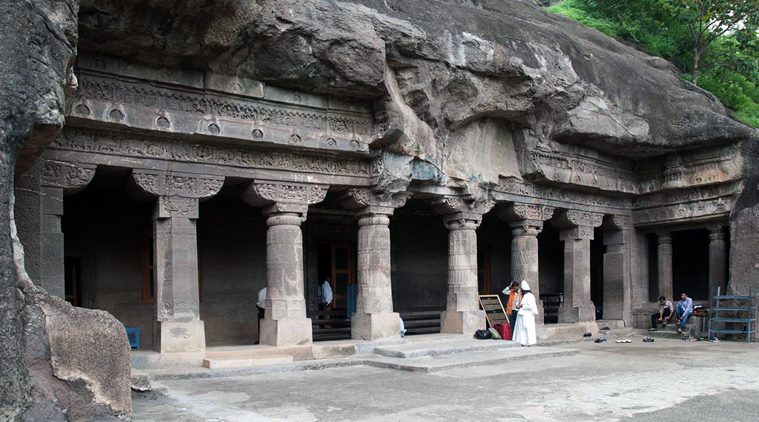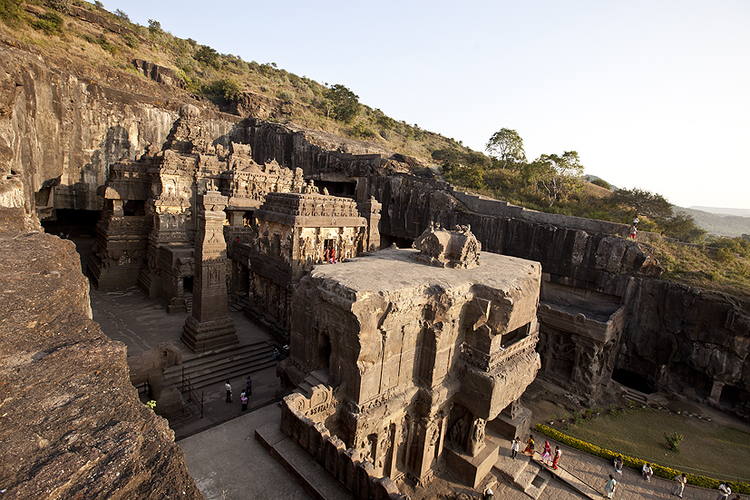Indian Heritage & Culture
Ajanta and Ellora Caves
- 16 Dec 2019
- 4 min read
Why in News
Two tourist visitor centres set up at Ajanta and Ellora caves by the Maharashtra government have been shut due to their pending water and electricity dues worth ₹5 crore.
Ajanta Caves
- Location: Ajanta is a series of rock-cut caves in the Sahyadri ranges (Western Ghats) on Waghora river near Aurangabad in Maharashtra.
- Number of Caves: There are a total of 29 caves (all buddhist) of which 25 were used as Viharas or residential caves while 4 were used as Chaitya or prayer halls.
- Time of Development
- The caves were developed in the period between 200 B.C. to 650 A.D.
- The Ajanta caves were inscribed by the Buddhist monks, under the patronage of the Vakataka kings – Harishena being a prominent one.
- Reference of the Ajanta caves can be found in the travel accounts of Chinese Buddhist travellers Fa Hien (during the reign of Chandragupta II; 380- 415 CE) and Hieun Tsang (during the reign of emperor Harshavardhana; 606 - 647 CE). .
- Painting
- The figures in these caves were done using fresco painting.
- The outlines of the paintings were done in red colour. One of the striking features is the absence of blue colour in the paintings.
- The paintings are generally themed around Buddhism – the life of Buddha and Jataka stories.
- UNESCO Site: The caves were designated a UNESCO World Heritage site in 1983.
Ellora Caves
- Location: It is located nearly 100 Kms away from Ajanta caves in the Sahyadri range of Maharashtra.
- Number of Caves: It is a group of 34 caves – 17 Brahmanical, 12 Buddhist and 5 Jain.
- Time of Development
- These set of caves were developed during the period between the 5th and 11th centuries A.D. (newer as compared to Ajanta Caves) by various guilds from Vidarbha, Karnataka and Tamil Nadu.
- That is why the caves reflect a natural diversity in terms of theme and architectural styles.
- UNESCO Site: The Ellora complex was designated a UNESCO World Heritage site in 1983.
- The most remarkable of the cave temples is Kailasa (Kailasanatha; cave 16), named for the mountain in the Kailasa Range of the Himalayas where the Hindu god Shiva resides.
Sahyadri Range
- Western Ghats are locally known by different names such as Sahyadri in Maharashtra, Nilgiri hills in Karnataka and Tamil Nadu and Anaimalai hills and Cardamom hills in Kerala.
- The Western Ghats are a north-south chain of mountains or hills that mark the western edge of the Deccan plateau region.
- Western Ghats are comparatively higher in elevation and more continuous than the Eastern Ghats. Their average elevation is about 1,500 m with the height increasing from north to south.
- Anaimudi (2,695 m), the highest peak of Peninsular plateau is located on the Anaimalai hills of the Western Ghats followed by Dodabetta (2,637 m) on the Nilgiri hills.
- Most of the Peninsular rivers such as Krishna and Cauvery have their origin in the Western Ghats.




